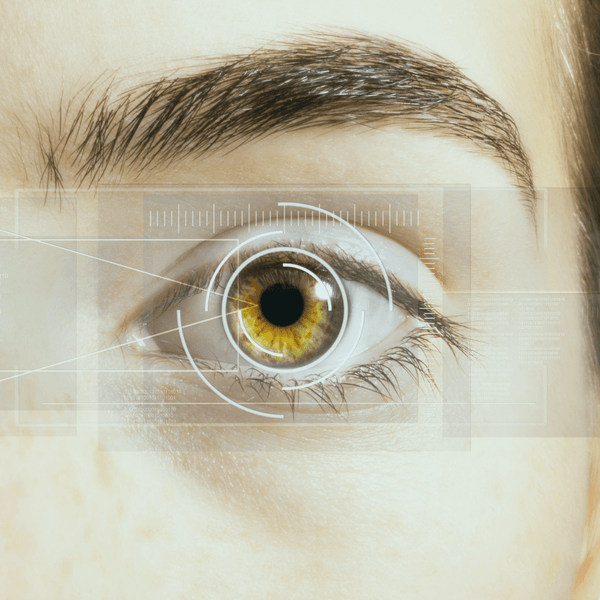All Categories
Featured
Table of Contents
In current years, modern technology has actually made substantial developments in the area of vision adjustment, providing people with more efficient, comfortable, and personalized choices than in the past. From ingenious procedures to advanced glasses, modern technology is reshaping exactly how we come close to vision modification. Right here's an exploration of just how these developments are boosting the choices available for those seeking vision modification.
Recent modern technologies, such as wavefront-guided LASIK, enable more personalized therapy by mapping the special blemishes in a person's eye. This personalized strategy can result in far better aesthetic outcomes and fewer side results, making laser vision adjustment a popular selection for those looking for to decrease or eliminate their dependence on glasses or call lenses.
New multifocal and fitting IOLs enable an extra smooth transition between near and remote vision. These innovative lenses are made to reduce the dependence on reading glasses after cataract surgical procedure, boosting the general lifestyle for patients. Technologies such as toric IOLs additionally aid correct astigmatism, better improving aesthetic clarity.
![]()
Moreover, flexible lenses that change their tint based upon light exposure can supply convenience and protection from UV rays, making sure optimal aesthetic quality in varying problems. Technologies like these not only deal improved vision yet also enhance the total experience for individuals.
Furthermore, there are specific call lenses designed for details vision problems, such as ortho-k lenses that carefully improve the cornea over night to decrease nearsightedness during the day. These advancements make it less complicated for people to find comfortable and efficient services tailored to their way of living and vision requirements.
Telemedicine enables patients to get follow-up care and changes to their vision modification prepares efficiently. This boosted accessibility guarantees that individuals can obtain timely care and make informed decisions concerning their vision wellness.
AI can also play a duty in individualizing treatment prepare for vision correction, making certain that clients get one of the most reliable and tailored remedies for their particular needs.
1. Laser Vision Correction.
One of the most significant developments in vision adjustment is the development of laser vision adjustment treatments, such as LASIK (Laser-Assisted In Situ Keratomileusis) and SMILE (Small Incision Lenticule Removal) These minimally invasive surgical treatments utilize precision lasers to improve the cornea, allowing light to focus appropriately on the retina.Recent modern technologies, such as wavefront-guided LASIK, enable more personalized therapy by mapping the special blemishes in a person's eye. This personalized strategy can result in far better aesthetic outcomes and fewer side results, making laser vision adjustment a popular selection for those looking for to decrease or eliminate their dependence on glasses or call lenses.
2. Advancements in Intraocular Lenses (IOLs)
For people who are not appropriate candidates for laser surgical procedure, developments in intraocular lenses (IOLs) have transformed cataract surgical procedure and vision adjustment for those with presbyopia (age-related problem in seeing close objects)New multifocal and fitting IOLs enable an extra smooth transition between near and remote vision. These innovative lenses are made to reduce the dependence on reading glasses after cataract surgical procedure, boosting the general lifestyle for patients. Technologies such as toric IOLs additionally aid correct astigmatism, better improving aesthetic clarity.
3. Smart Glasses and Wearable Technology.
The assimilation of innovation into glasses has actually led to the development of clever glasses and wearable tools that improve vision modification. For example, clever glasses equipped with augmented reality (AR) can overlay electronic details onto the physical globe, helping individuals with reduced vision or aesthetic impairments.
Moreover, flexible lenses that change their tint based upon light exposure can supply convenience and protection from UV rays, making sure optimal aesthetic quality in varying problems. Technologies like these not only deal improved vision yet also enhance the total experience for individuals.
4. Call Lens Innovations.
Call lens modern technology has actually likewise advanced significantly, giving clients with a range of alternatives to fulfill their demands. Current innovations consist of daily disposable lenses, which supply comfort and hygiene, and expanded wear lenses that can be put on constantly for several days.Furthermore, there are specific call lenses designed for details vision problems, such as ortho-k lenses that carefully improve the cornea over night to decrease nearsightedness during the day. These advancements make it less complicated for people to find comfortable and efficient services tailored to their way of living and vision requirements.
5. Telemedicine and Remote Eye Treatment.
Technology is not only boosting the tools made use of for vision improvement yet likewise enhancing accessibility to eye treatment solutions via telemedicine. Individuals can currently have online assessments with eye treatment professionals, making it extra hassle-free to discuss vision troubles and check out adjustment choices without needing to visit a center literally.Telemedicine enables patients to get follow-up care and changes to their vision modification prepares efficiently. This boosted accessibility guarantees that individuals can obtain timely care and make informed decisions concerning their vision wellness.
6. Man-made Knowledge (AI) in Eye Treatment.
The assimilation of expert system (AI) in eye treatment is transforming how vision improvement is approached. AI formulas can assess imaging information from retinal scans and other diagnostic tools, helping eye treatment experts detect problems like diabetic retinopathy and macular degeneration previously and extra precisely.AI can also play a duty in individualizing treatment prepare for vision correction, making certain that clients get one of the most reliable and tailored remedies for their particular needs.
Verdict.
The advancements in technology are considerably boosting vision modification alternatives, offering clients much more reliable, comfortable, and personalized solutions than ever in the past. From laser vision improvement and ingenious IOLs to clever glasses and AI-driven diagnostics, these developments are improving how we come close to vision wellness.Latest Posts
Experience Coastal Elegance at Deauville Inn
Published Apr 10, 25
1 min read
A Historic Shoreline Destination with Modern Thrills
Published Apr 05, 25
1 min read
An Extravagant Retreat: The Claridge Indoor Swimming Pool
Published Feb 06, 25
1 min read